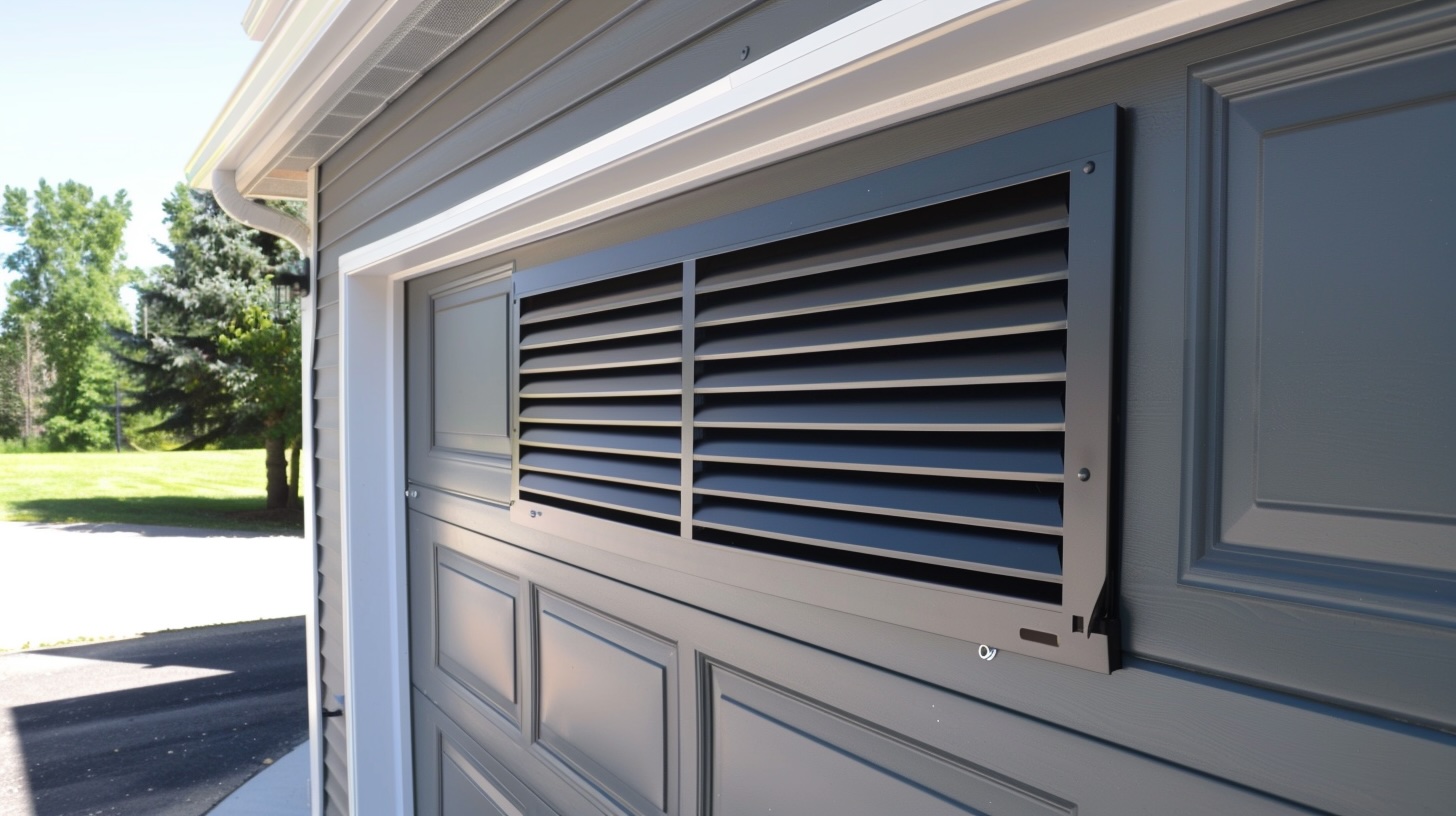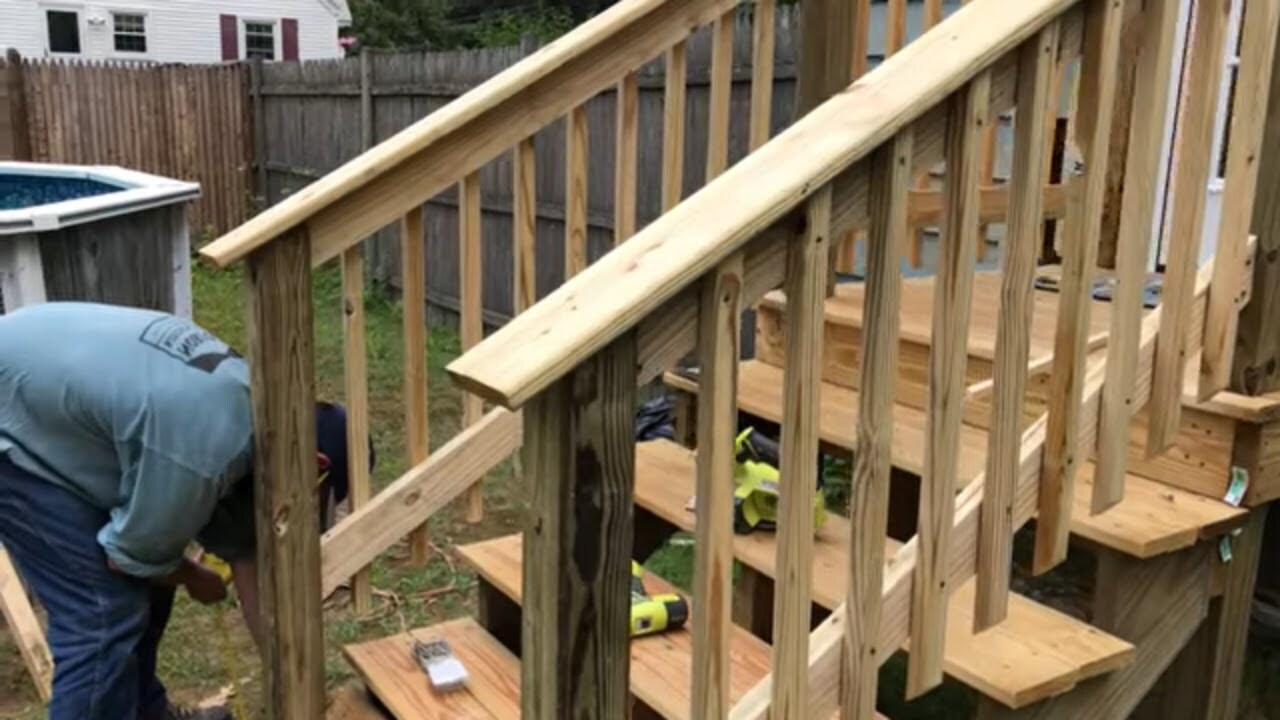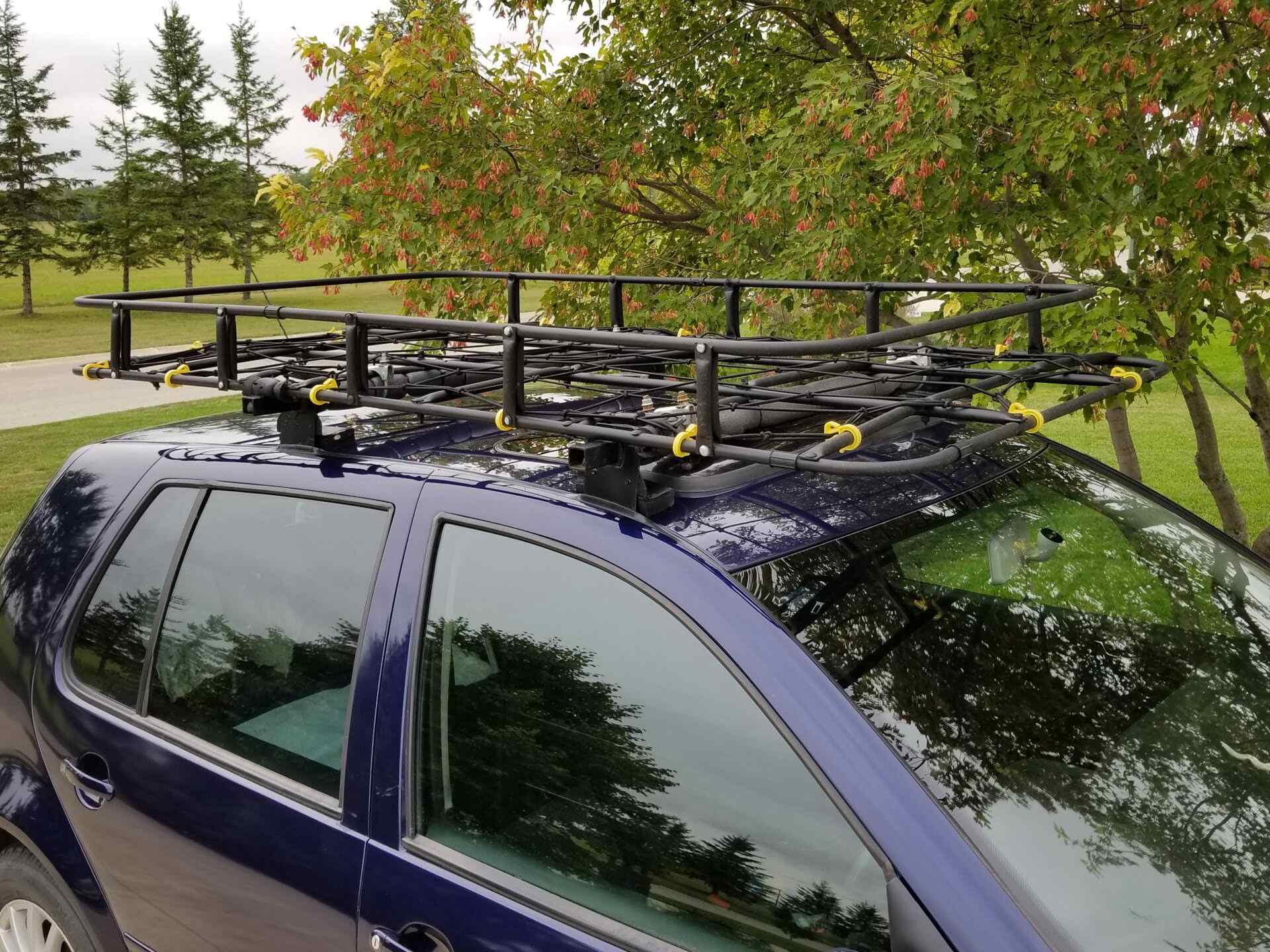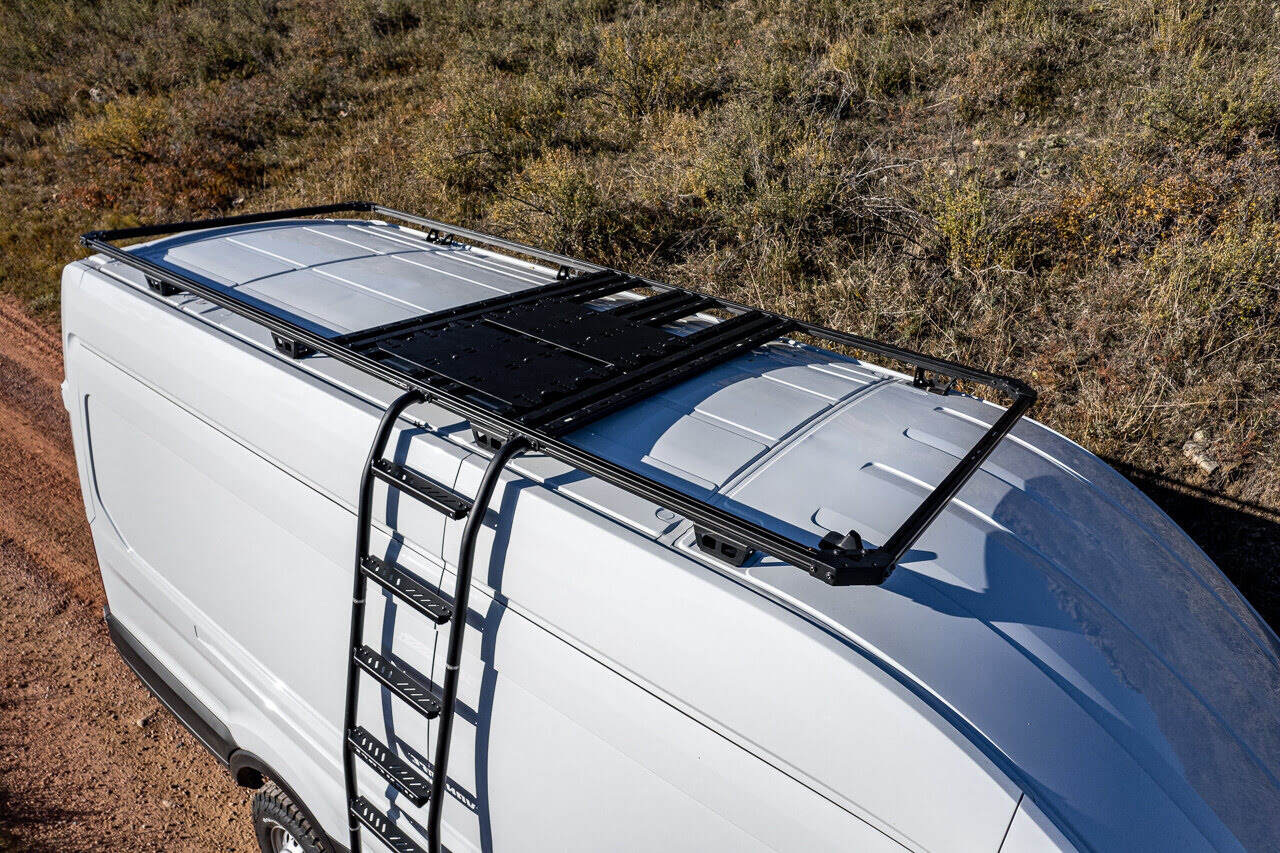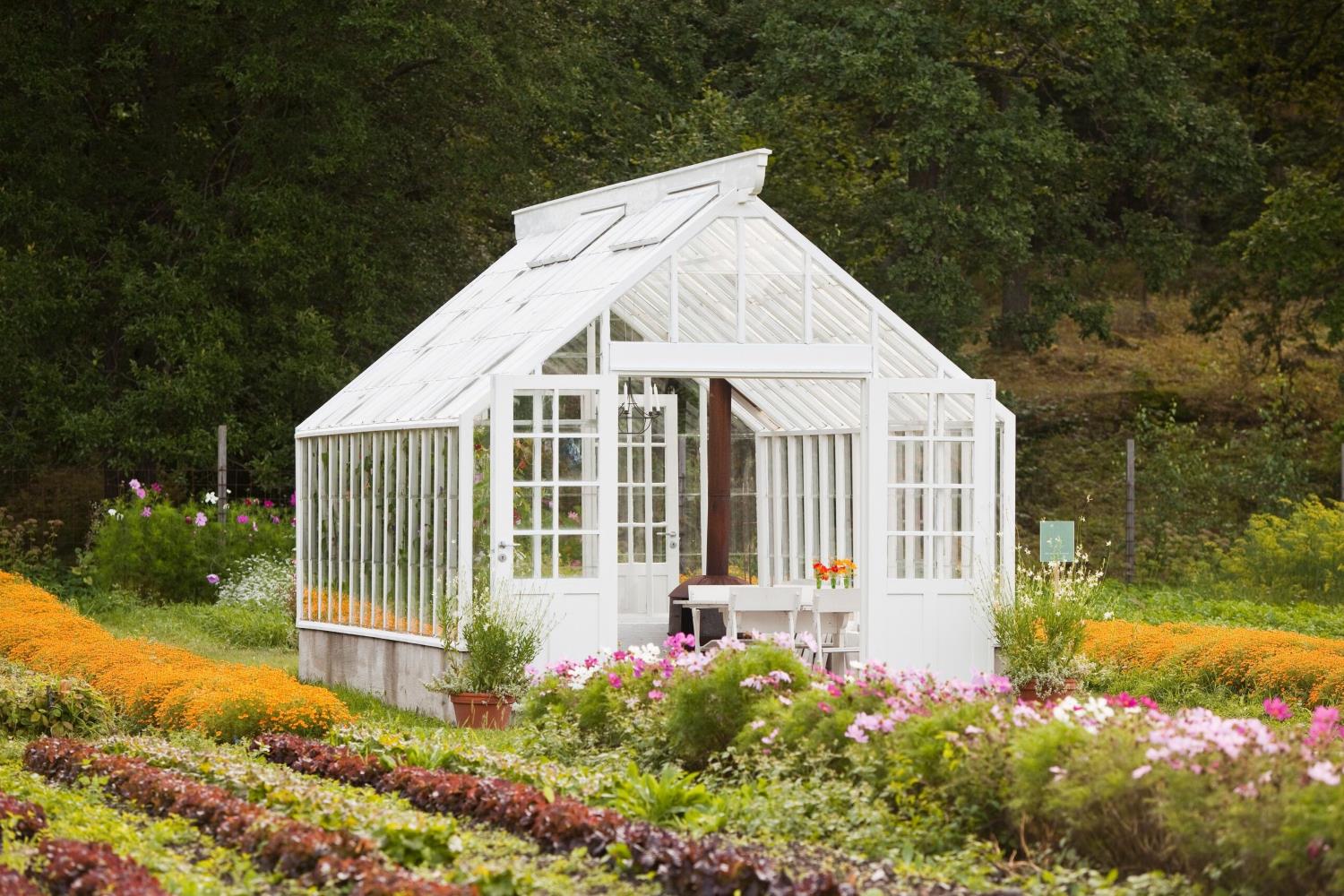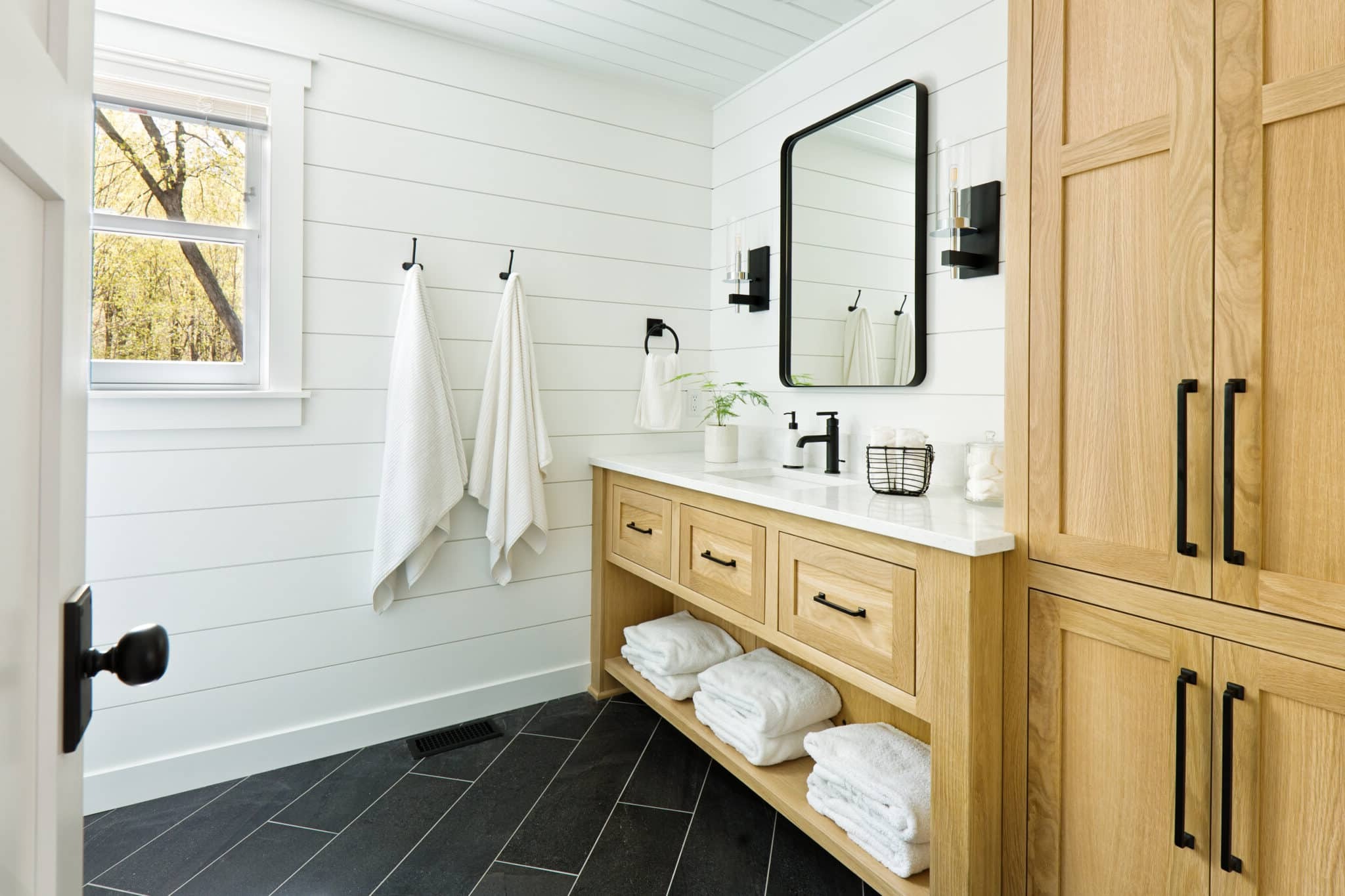Home>Create & Decorate>DIY & Crafts>DIY Homemade Sled Deck: Step-by-Step Guide
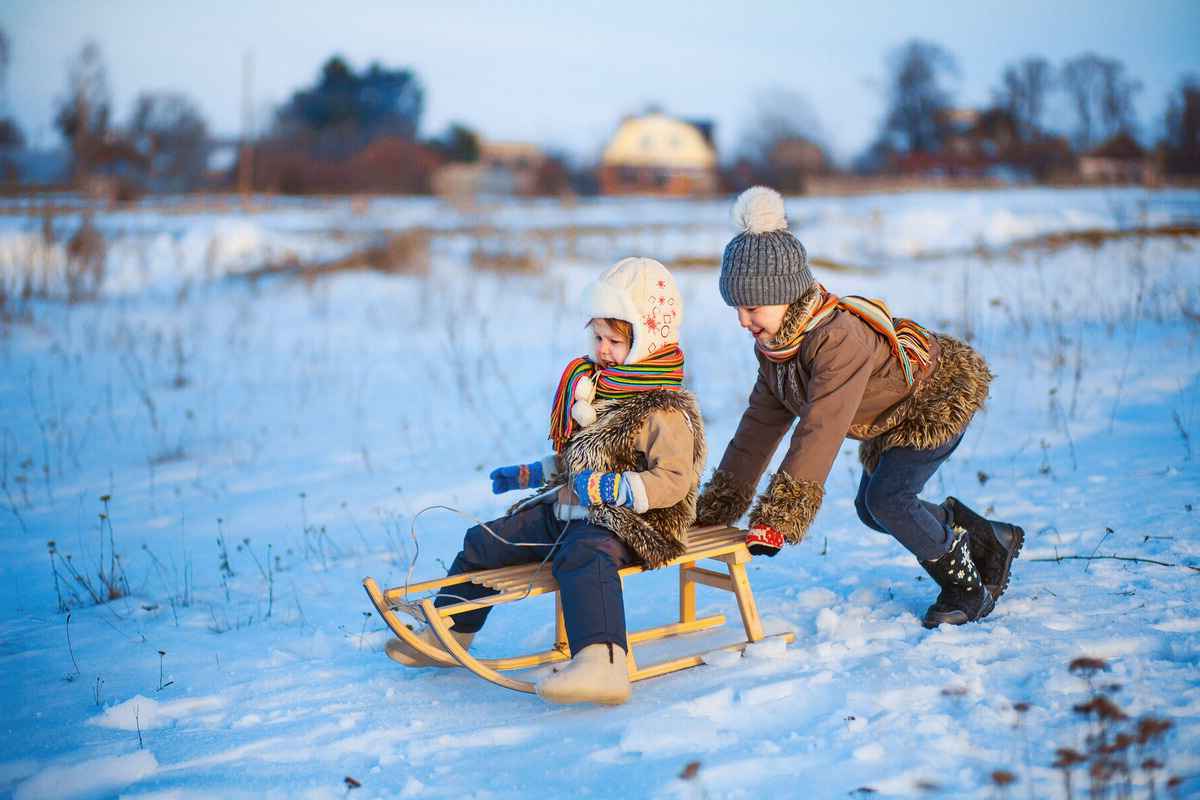

DIY & Crafts
DIY Homemade Sled Deck: Step-by-Step Guide
Published: February 23, 2024

Senior Editor in Create & Decorate, Kathryn combines traditional craftsmanship with contemporary trends. Her background in textile design and commitment to sustainable crafts inspire both content and community.
Learn how to build your own sled deck with our step-by-step DIY guide. Perfect for DIY enthusiasts and crafters. Start your project today!
(Many of the links in this article redirect to a specific reviewed product. Your purchase of these products through affiliate links helps to generate commission for Twigandthistle.com, at no extra cost. Learn more)
Introduction
Are you ready to take your winter adventures to the next level? Building your own homemade sled deck can be a rewarding and practical project that will enable you to transport your snowmobiles with ease. Whether you're a seasoned DIY enthusiast or a newcomer to the world of crafting, this step-by-step guide will walk you through the process of creating a sturdy and reliable sled deck.
Crafting your own sled deck allows you to customize it to your specific needs and preferences, ensuring that it perfectly accommodates your snowmobiles. By embarking on this DIY project, you'll not only save money but also gain a sense of accomplishment as you witness your creation come to life.
Throughout this guide, we'll explore the materials and tools you'll need, as well as the precise steps to measure, cut, and assemble the components. From constructing the base and frame to adding support beams and a non-slip surface, each stage is crucial in creating a safe and functional sled deck.
By the end of this journey, you'll have a homemade sled deck that's not only practical but also a testament to your craftsmanship. So, roll up your sleeves, gather your tools, and let's dive into the exciting world of DIY sled deck construction.
Read more: DIY Homemade Drain Cleaner Guide
Materials and Tools Needed
Before diving into the construction process, it's essential to gather all the necessary materials and tools to ensure a smooth and efficient build. Here's a comprehensive list of what you'll need:
Materials:
- Plywood: Select sturdy plywood to serve as the base of the sled deck. The thickness of the plywood will depend on the weight it needs to support.
- Pressure-Treated Lumber: This will be used to construct the frame and support beams, providing the necessary strength and durability.
- Metal Ramp: A durable metal ramp will facilitate the loading and unloading of snowmobiles onto the deck.
- Non-Slip Surface: Consider using a non-slip material to cover the plywood surface, ensuring secure traction for the snowmobiles.
- Tie-Downs: These are essential for securing the snowmobiles in place during transportation, preventing any movement or slippage.
Tools:
- Circular Saw: A reliable circular saw will be indispensable for cutting the plywood and lumber to the required dimensions.
- Drill and Screws: These will be used to fasten the various components together securely.
- Measuring Tape and Carpenter's Square: Accurate measurements and precise angles are crucial in ensuring the structural integrity of the sled deck.
- Safety Gear: Prioritize safety by equipping yourself with protective goggles, gloves, and a dust mask to safeguard against potential hazards during the construction process.
By ensuring that you have all the necessary materials and tools at your disposal, you'll be well-prepared to embark on this DIY sled deck construction journey. With these essentials in hand, you're ready to move on to the next step: measuring and cutting the base.
Step 1: Measure and Cut the Base
The first crucial step in constructing your homemade sled deck is to measure and cut the base, which forms the foundation of the entire structure. Start by laying out the plywood on a flat and spacious work area, ensuring that you have ample room to maneuver and make precise cuts.
Using a measuring tape and carpenter's square, carefully measure and mark the dimensions for the base according to the size of your snowmobiles. It's essential to account for the length and width of the snowmobiles, allowing for a comfortable fit while ensuring that the base provides adequate support.
Once the measurements are marked, use a reliable circular saw to cut the plywood to the precise dimensions. Take your time and maintain steady, controlled movements to achieve clean and accurate cuts. It's advisable to double-check the measurements before cutting to avoid any errors that could compromise the structural integrity of the sled deck.
After the base has been cut to size, inspect the edges to ensure they are smooth and free from any splinters or rough patches. Sanding the edges lightly can help achieve a professional finish and minimize the risk of any snagging or damage to the snowmobiles during loading and unloading.
By meticulously measuring and cutting the base, you're laying the groundwork for a sturdy and well-fitted sled deck that will securely accommodate your snowmobiles. With the base prepared, you're now ready to progress to the next step: constructing the frame that will provide essential support and stability to the sled deck.
Step 2: Construct the Frame
With the base of the sled deck prepared, the next pivotal phase involves constructing the frame, which serves as the structural backbone of the entire assembly. The frame not only provides essential support but also determines the overall stability and durability of the sled deck.
Begin by selecting the pressure-treated lumber that will form the frame. It's crucial to choose lumber that is robust and capable of withstanding the weight of the snowmobiles while maintaining structural integrity. Measure and cut the lumber to the required lengths, ensuring precision and accuracy in each cut.
Using a carpenter's square to maintain right angles, assemble the cut pieces of lumber to form the perimeter of the sled deck. Secure the joints by pre-drilling and then fastening the pieces together with screws. This meticulous approach to construction is vital in ensuring that the frame is solid and capable of withstanding the rigors of transporting snowmobiles.
In addition to the perimeter, it's essential to incorporate strategically placed cross beams within the frame to distribute the weight evenly and enhance the overall stability. These cross beams serve as crucial reinforcement, preventing any potential sagging or weakening of the frame under the weight of the snowmobiles.
As the frame takes shape, take the time to inspect each joint and connection point, ensuring that they are secure and free from any structural compromises. This meticulous attention to detail will contribute to the overall safety and reliability of the sled deck.
By the time the frame construction is complete, you should have a robust and well-constructed framework that forms the solid foundation of the sled deck. With the frame in place, the next steps will involve adding support beams, attaching the ramp, and incorporating a non-slip surface to ensure a safe and functional sled deck.
With the frame construction accomplished, you're well on your way to realizing your homemade sled deck. The sturdy frame sets the stage for the subsequent steps, bringing you closer to the fulfillment of this exciting DIY project.
Step 3: Add Support Beams
With the frame of the sled deck securely in place, the next critical phase involves adding support beams to fortify the structure and enhance its load-bearing capacity. These support beams play a pivotal role in distributing the weight of the snowmobiles evenly across the deck, ensuring stability and structural integrity during transportation.
To begin this phase, carefully select the pressure-treated lumber that will serve as the support beams. It's essential to choose lumber that is not only durable but also capable of withstanding the weight and pressure exerted by the snowmobiles. Measure and cut the lumber to the required lengths, ensuring precision and accuracy in each cut to facilitate seamless integration into the existing framework.
Strategically position the support beams within the frame, taking into account the dimensions of the sled deck and the optimal weight distribution for the snowmobiles. By spacing the support beams evenly and securing them to the frame with screws, you'll create a robust network of reinforcement that enhances the overall strength and stability of the sled deck.
In addition to the primary support beams, consider incorporating diagonal bracing to further fortify the structure and minimize any potential lateral movement. These diagonal braces serve to bolster the framework, effectively reducing sway and enhancing the overall rigidity of the sled deck.
As the support beams are integrated into the framework, meticulously inspect each connection point to ensure that they are secure and capable of withstanding the anticipated loads. This thorough examination is crucial in identifying and addressing any potential weak points, thereby fortifying the sled deck against structural vulnerabilities.
By adding support beams to the sled deck, you're not only enhancing its load-bearing capacity but also reinforcing its overall stability and resilience. With this phase completed, the next steps will involve attaching the ramp, adding a non-slip surface, and installing tie-downs to create a fully functional and secure sled deck.
The addition of support beams marks a significant milestone in the construction of your homemade sled deck, bringing you closer to the realization of this practical and rewarding DIY project.
Step 4: Attach the Ramp
As you progress in the construction of your homemade sled deck, the pivotal next step involves attaching the ramp, a crucial component that facilitates the seamless loading and unloading of snowmobiles onto the deck. The ramp serves as the gateway to effortless transportation, allowing for smooth transitions as the snowmobiles are maneuvered onto and off the sled deck.
Begin by selecting a durable metal ramp that is capable of withstanding the weight of the snowmobiles and providing a secure pathway for their traversal. The dimensions of the ramp should be carefully considered to ensure a comfortable incline and sufficient width, accommodating the specific requirements of your snowmobiles.
Position the ramp at the designated loading area of the sled deck, ensuring that it aligns seamlessly with the edge of the deck to create a smooth transition. Secure the ramp in place by fastening it to the frame using sturdy screws, ensuring that it is firmly anchored and capable of supporting the weight of the snowmobiles during loading and unloading.
In addition to securing the ramp to the frame, consider incorporating additional reinforcement to fortify its connection and enhance its stability. This may involve strategically placed support brackets or braces to minimize any potential movement or shifting during the loading process, ensuring a secure and reliable pathway for the snowmobiles.
Once the ramp is securely attached, conduct a thorough inspection to verify its stability and structural integrity. Test the ramp by simulating the loading and unloading process, ensuring that it provides a smooth and secure transition for the snowmobiles. This meticulous evaluation is essential in identifying and addressing any potential issues before the sled deck is put into active use.
By attaching the ramp to the sled deck, you're not only creating a functional and accessible pathway for the snowmobiles but also enhancing the overall practicality and convenience of the deck. With the ramp in place, the next steps will involve adding a non-slip surface to ensure secure traction for the snowmobiles and installing tie-downs to secure them in place during transportation.
The successful attachment of the ramp represents a significant milestone in the construction of your homemade sled deck, bringing you closer to the realization of this practical and rewarding DIY project.
Step 5: Add Non-Slip Surface
As you venture into the fifth crucial step of constructing your homemade sled deck, the focus shifts to incorporating a non-slip surface, a fundamental feature that ensures secure traction for the snowmobiles during transportation. The addition of a non-slip surface not only enhances safety but also contributes to the overall functionality and reliability of the sled deck, providing peace of mind as you embark on winter adventures.
Selecting the appropriate non-slip material is paramount to the effectiveness of this feature. Consider utilizing specialized non-slip surfacing products designed to withstand the rigors of outdoor use and provide optimal traction, even in snowy or icy conditions. These materials often feature textured surfaces or integrated grip patterns that enhance friction, preventing the snowmobiles from shifting or sliding during transit.
Before applying the non-slip surface, thoroughly clean and prepare the plywood base to ensure proper adhesion and longevity of the material. Remove any debris, dust, or contaminants from the surface, and consider lightly sanding the plywood to create a smooth and receptive foundation for the non-slip material.
Carefully measure and cut the non-slip surfacing material to fit the dimensions of the sled deck, ensuring complete coverage and a seamless integration with the edges of the plywood base. Whether utilizing adhesive-backed sheets or applying a specialized coating, follow the manufacturer's instructions meticulously to achieve a secure and durable bond.
Once the non-slip material is in place, firmly press and smooth out any air bubbles or wrinkles to guarantee a uniform and stable surface. This meticulous approach is essential in maximizing the effectiveness of the non-slip feature, providing a reliable grip for the snowmobiles as they are loaded, transported, and unloaded from the sled deck.
Upon completion, conduct thorough testing to verify the efficacy of the non-slip surface, simulating the loading and unloading process to ensure that the traction is secure and consistent. This comprehensive evaluation is vital in confirming the reliability of the non-slip feature and addressing any potential adjustments or refinements before the sled deck is put into active use.
By adding a non-slip surface to the sled deck, you're not only prioritizing safety but also enhancing the practicality and functionality of the structure. With this essential feature in place, the final step will involve installing tie-downs to secure the snowmobiles in position, culminating in the realization of your homemade sled deck.
The successful integration of a non-slip surface represents a significant milestone in the construction of your sled deck, underscoring your commitment to safety and precision in this rewarding DIY endeavor.
Read more: DIY Homemade Shower Cleaner Guide
Step 6: Install Tie-Downs
As you approach the final phase of constructing your homemade sled deck, the installation of tie-downs takes center stage as a critical element in ensuring the secure transportation of your snowmobiles. Tie-downs play a pivotal role in immobilizing the snowmobiles during transit, preventing any movement or shifting that could compromise safety and stability.
Begin by selecting high-quality tie-down anchors designed to withstand the forces exerted during transportation. These anchors should be robust and reliable, capable of securely fastening the snowmobiles to the sled deck without risk of slippage or detachment. Consider utilizing heavy-duty D-ring anchors or specialized tie-down loops that provide strong and dependable attachment points.
Strategically position the tie-down anchors at designated locations on the sled deck, ensuring optimal placement to accommodate the dimensions and configuration of your snowmobiles. It's essential to create a secure network of tie-down points that effectively distribute the tension and ensure uniform immobilization of the snowmobiles.
Once the anchor points are established, affix them securely to the frame or support beams using heavy-duty screws or bolts, ensuring that they are firmly anchored and capable of withstanding the anticipated loads. It's crucial to verify the integrity of the attachment, conducting thorough inspections to confirm that the tie-down anchors are steadfast and free from any structural compromises.
With the tie-down anchors in place, proceed to integrate high-strength tie-down straps or cables that will connect the snowmobiles to the anchors. These straps should be durable and resistant to abrasion, capable of withstanding the rigors of transportation while providing reliable tension to secure the snowmobiles in position.
Carefully fasten the tie-down straps to the snowmobiles, ensuring that they are snug and taut without causing undue strain. The goal is to achieve a balanced and secure connection that prevents any lateral movement or shifting of the snowmobiles, maintaining their stability throughout the journey.
Upon completing the installation of tie-downs, conduct comprehensive testing to validate the effectiveness of the immobilization. Simulate the forces and movements that may occur during transportation, ensuring that the tie-downs effectively restrain the snowmobiles and maintain their position without compromise.
By installing tie-downs on the sled deck, you're not only prioritizing safety and security but also ensuring peace of mind as you embark on winter adventures. With this essential feature in place, your homemade sled deck is fully equipped to transport your snowmobiles with confidence and reliability.
Conclusion
Congratulations on successfully completing the construction of your homemade sled deck! This remarkable DIY endeavor has not only empowered you to create a practical and customized transportation solution for your snowmobiles but has also showcased your ingenuity and craftsmanship. As you reflect on the journey from the initial planning stages to the final integration of tie-downs, it's evident that this project has been a testament to your dedication and resourcefulness.
The sled deck you've meticulously crafted embodies a perfect fusion of functionality, reliability, and safety. Each step, from measuring and cutting the base to adding the non-slip surface and installing tie-downs, has been a testament to your attention to detail and commitment to excellence. The result is a robust and dependable sled deck that stands ready to facilitate your winter adventures with confidence and ease.
Beyond the practical utility of the sled deck, this project has offered a wealth of intangible rewards. It has provided an opportunity for personal growth, allowing you to expand your skills and knowledge in the realm of DIY and crafts. The sense of accomplishment derived from overcoming challenges and bringing your vision to fruition is immeasurable, serving as a testament to your resilience and creativity.
Moreover, the homemade sled deck represents a tangible symbol of self-sufficiency and innovation. By embarking on this project, you've demonstrated a willingness to explore new horizons and embrace the spirit of self-reliance. The sled deck stands as a testament to your ability to transform ideas into reality, showcasing your capacity to tackle practical challenges with determination and skill.
As you prepare to put your sled deck into active use, take pride in the fact that every component and detail has been meticulously crafted to ensure the safety and security of your snowmobiles. The non-slip surface, sturdy frame, and reliable tie-downs collectively embody a commitment to excellence, reflecting your unwavering dedication to creating a superior and trustworthy transportation solution.
In conclusion, the completion of your homemade sled deck marks not only the culmination of a remarkable DIY project but also the beginning of countless memorable adventures. As you load your snowmobiles onto the deck and set out on winter escapades, may the sled deck stand as a testament to your creativity, resilience, and unwavering commitment to excellence. Embrace the journey ahead with confidence, knowing that your homemade sled deck is a reflection of your passion for crafting and your determination to conquer new frontiers.

